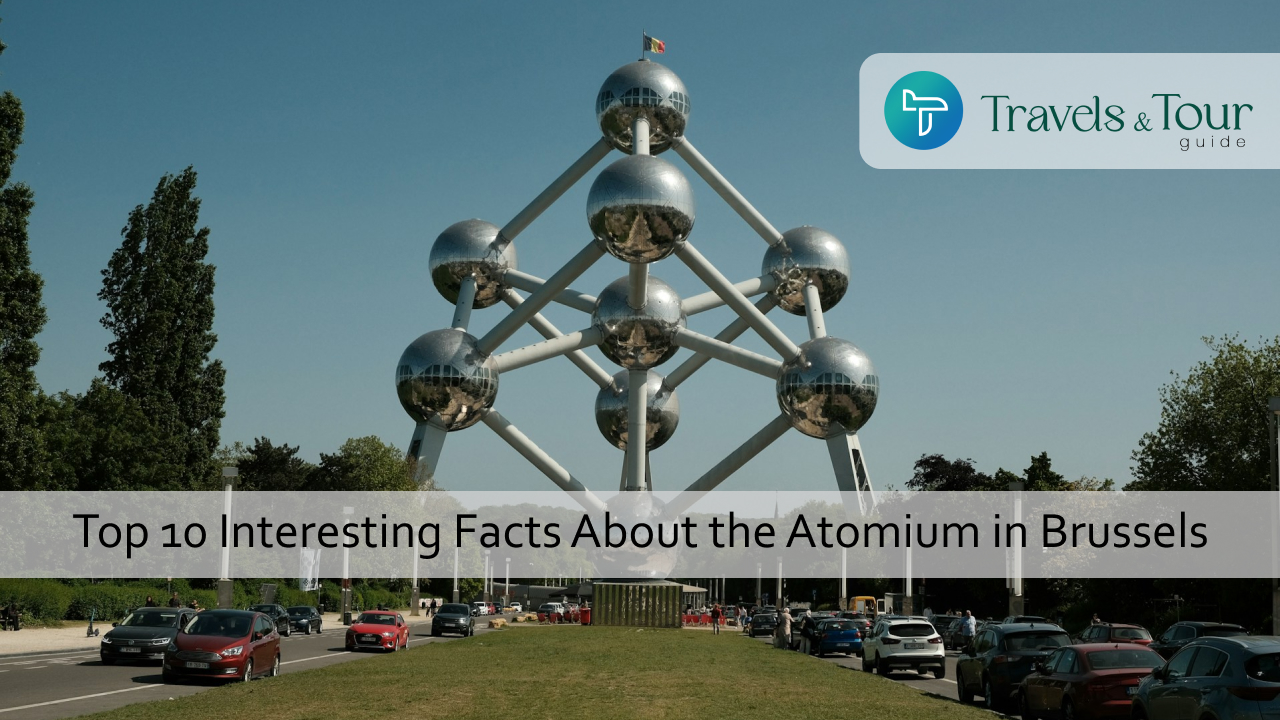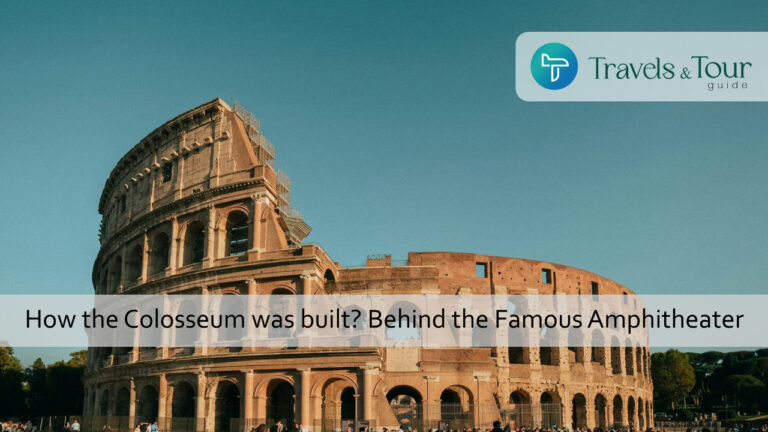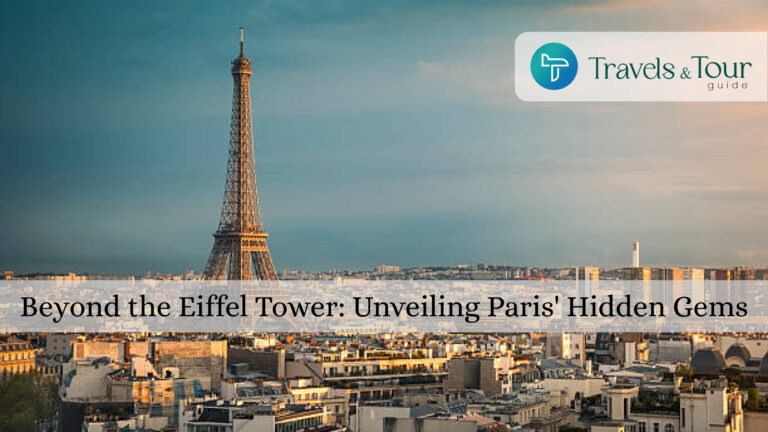Top 10 Interesting Facts About the Atomium in Brussels
Primary KW: Atomium in Brussels
References: https://www.discoverwalks.com/blog/belgium/top-10-facts-about-the-atomium-in-brussels/ https://www.enjoytravel.com/en/travel-news/interesting-facts/facts-about-atomium-brussels https://www.webuildvalue.com/en/infrastructure-news/atomium-belgium.html https://facts.net/world/landmarks/14-surprising-facts-about-the-atomium/ https://www.brussels.com/blog/2023/04/27/10-things-know-about-atomium-brussels/ https://www.checkoutsam.com/the-atomium-in-brussels/
One of the most unique attractions in Brussels is the Atomium, a structure built to replicate a magnified iron unit cell (aka iron crystal). This humongous iron crystal replication was designed by André Waterkeyn and was meant to adhere to an Atomic Age theme at the 1958 World Fair.
With its sleek modernistic design, large steel spheres, art centre, and various temporary exhibitions, the Atomium in Brussels is a cultural place with heritage value that should be on everyone’s Belgium itinerary. As a bonus, it’s easily accessible via public transport from the city centre. Visitors can gain entry via a pass at the ticket office or by purchasing tickets online.
Below, you’ll find ten exciting facts about Brussels’ Atomium.
1. It is the most popular tourist attraction in Brussels.
This stunning attraction draws in 600,000 visitors annually, making it one of Brussels’s most popular tourist sites. It has been a popular attraction since it was created in 1958. While visitors may head to this attraction for different reasons, it remains the most visited site in the city.
2. It’s near Mini-Europe, another top attraction.
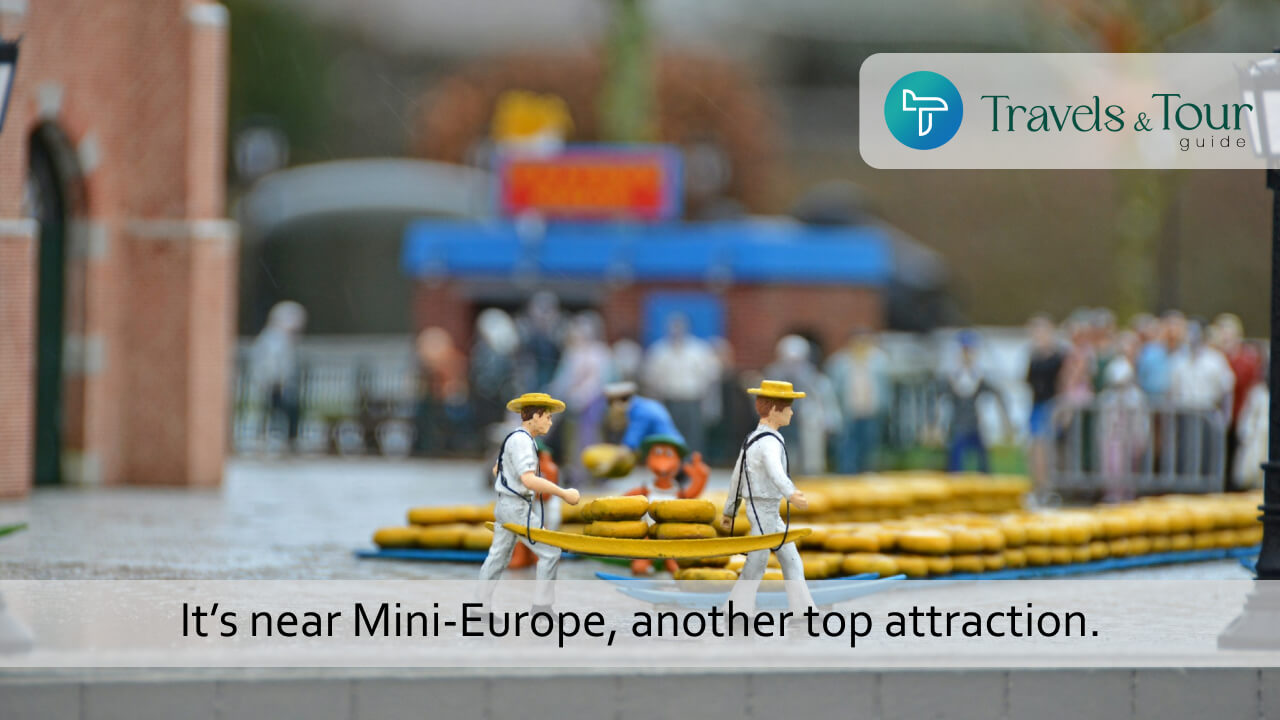
Part of what makes this attraction so appealing (besides its history, museum, restaurant, and views) is that it sits near Mini-Europe. Right at the base of the Atomium in Brussels is the Bruparck Theme Park, which contains Mini-Europe. Here, visitors can explore the most significant landmarks and buildings in the European Union. Like its name suggests, the landmarks/buildings are built on a smaller scale. There are 350 buildings for visitors to check out. Those interested in viewing both attractions can buy a combined ticket instead of an Atomium ticket for entry.
3. It was created for the 1958 Brussels World’s Fair.
This Brussels landmark was built for the 1958 World Fair in Brussels. It was meant to represent Belgium, peace, and the positive view of the exciting scientific advancements to come in the future. To keep this important landmark in tip-top shape, the Atomium in Brussels was updated from 2004 to 2006 in a major national event.
4. The Atomium in Brussels was supposed to be temporary.
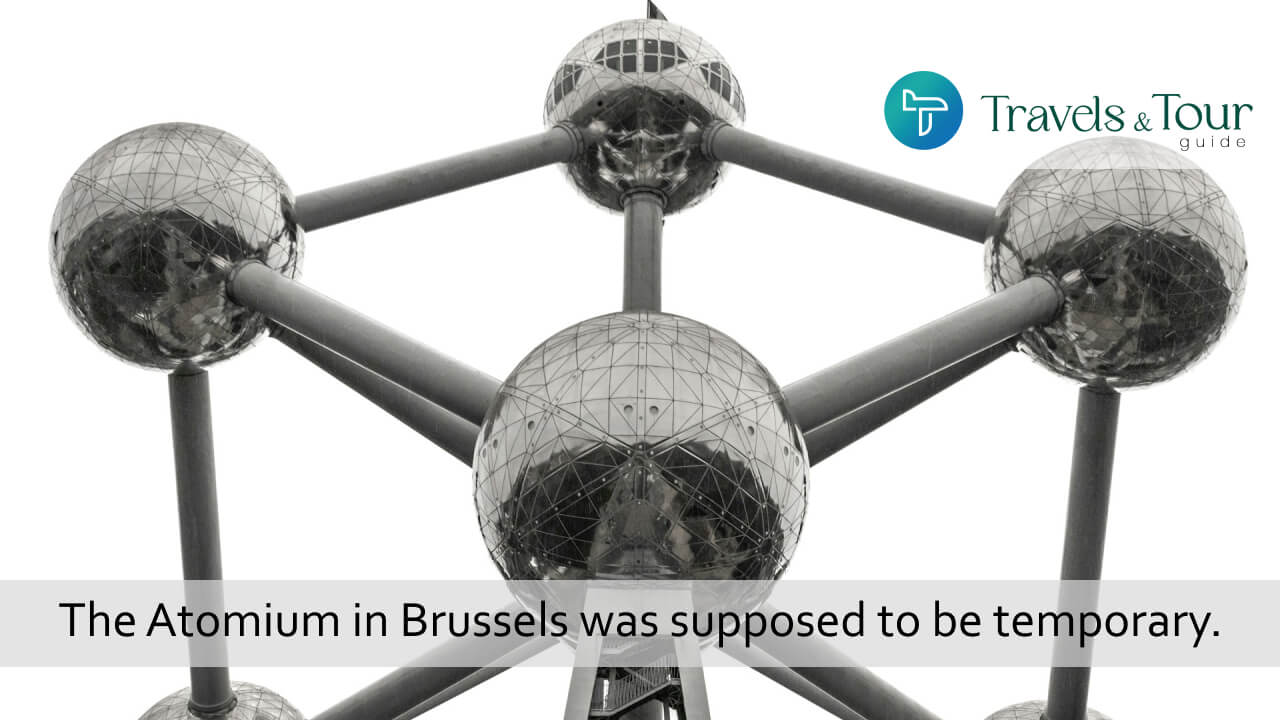
This interesting landmark was intended to only last for the World’s Fair (about six months). It was supposed to be torn down and removed directly after the fair ended. However, because of its popularity, the removal of the Atomium kept getting delayed each year. It has now been standing for 60+ years!
5. Its nine spheres were made from steel and aluminum.
Though this attraction replicates an iron unit cell, it was made from steel and aluminum. Each of the nine spheres was created with steel. They are attached with a steel structure. There is a small section made from reinforced concrete (to help with support). However, the Atomium in Brussels is primarily made from metal. Originally, the panels were constructed using aluminum. However, the panels were replaced with steel ones during the reconstruction.
6. The Atomium in Brussels has 3,000+ LED lights.
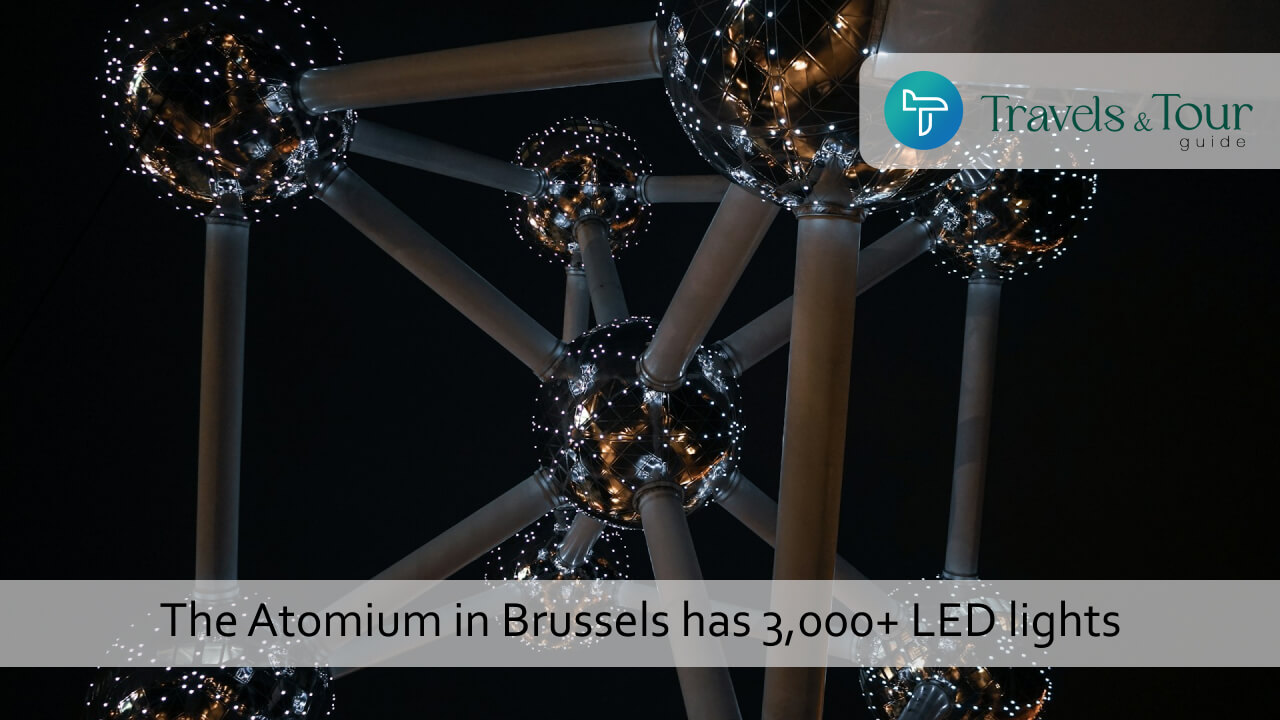
The 2004 renovation was not simply to update the deteriorating parts of the Atomium in Brussels. It was also used as a way to update the lighting system. Originally, there were 2,400 lights, though these were updated to 3,000+ LED lights. These lights are turned on each night, creating a dazzling light show for visitors of all ages. The lights display different colors and patterns, creating a unique way to view the structure.
Currently, there are a few exhibitions inside which also feature lights: CENTRALE and RESTART. The first is a permanent exhibit, while RESTART is meant to be a temporary exhibit. Each offers an immersive activity that combines space, time, reality, dreams, nature, and science into an exciting, hypnotic experience.
7. The iconic Atomium took 18 months of prep time.
It’s no wonder the Atomium in Brussels is considered modernistic and, in 58, an invention of the future. It took 18 months of testing and preparation before construction on the Atomium began. This testing phase began in January 1955 and included wind tunnel tests. This structure was the first of its kind, so it required rigorous testing before being featured at the World Expo.
Because of the short time left before the expo began, two companies were hired to create the Atomium in Brussels. To help keep construction timely, standardized pieces were used when possible. Construction occurred from March 1956 to March 1958, finishing right before the Expo.
8. This landmark is home to a museum and the Atomium Restaurant.
One of the spheres (the bottom one) in the Atomium is used as a museum. It offers insight into the 1958 World Expo, what life was like in the 1950s, and how the landmark was built. The Atomium Restaurant is in the top sphere, which sits 100 meters above ground level. You’ll find a bar and traditional Belgian cuisine here, from specialties to seasonal offerings. The bar and restaurant are open daily.
9. Only some of the spheres are explorable.
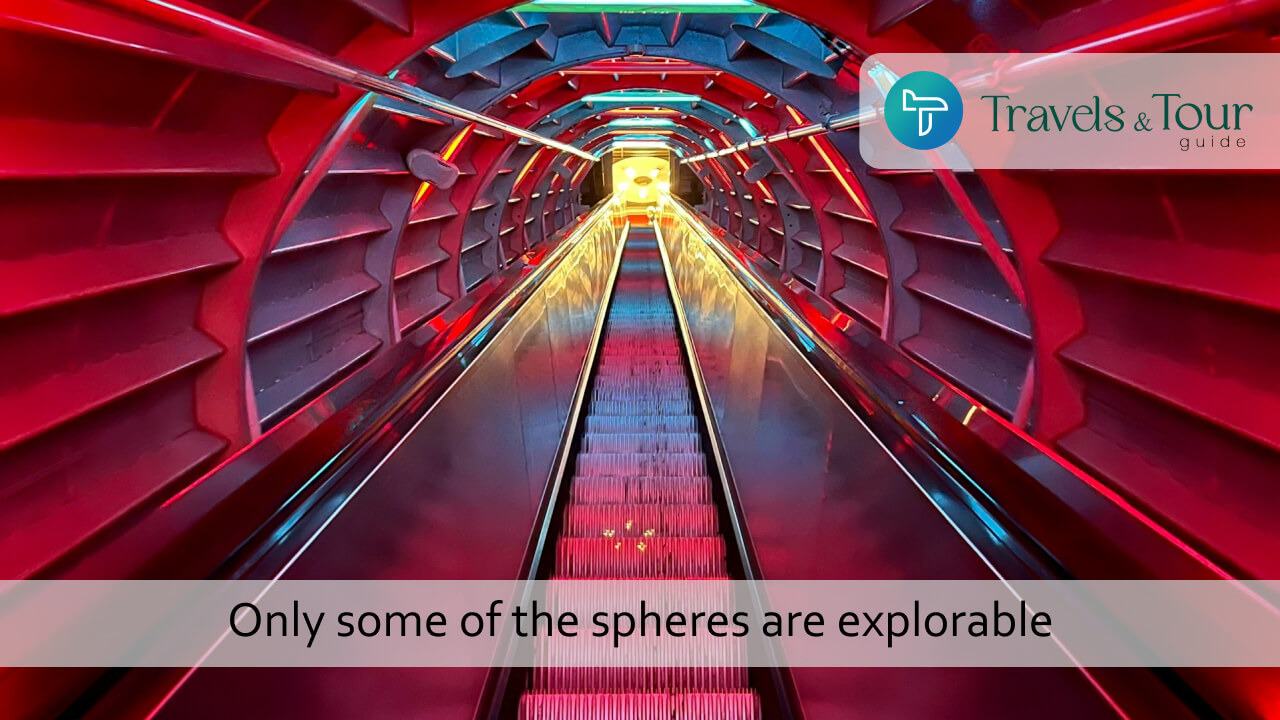
When the Atomium in Brussels opened in 1958, only six of the nine spheres were open to the public for safety reasons. Four spheres contained information on nuclear energy and its peaceful uses. One sphere contained the restaurant, which remains open to the public. Tours of the Atomium are available, allowing visitors access to five spheres (including the Panorama). The Atomium ticket automatically includes access to the Design Museum Brussels near the Atomium.
When planning your visit to the Atomium, avoid January 22-26, as these are the only days the attraction is closed during the year. These dates in January are when elevator maintenance occurs. The attraction is open on holidays like Christmas, though the hours may be shortened (depending on the holiday).
10. The steel Atomium in Brussels is copyrighted.
While the Atomium itself is not copyrighted, the design for the structure is protected. SABAM owns the copyrights to Atomium’s design. Reproductions of the Atomium image are not allowed and are legally required to be taken down.
Check out our blog for more exciting travel facts, tips, and other helpful travel-related information. We cover information on international destinations and attractions, from the Eiffel Tower to the Grand Canyon.

